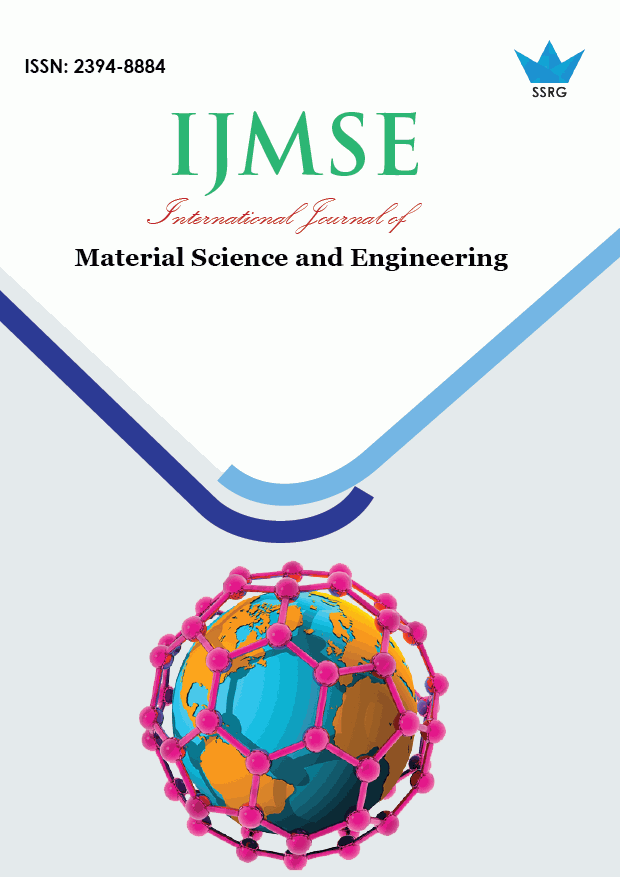Correlation of the Fermi energy and others to the electron charge-discharge characteristics of atoms

| International Journal of Material Science and Engineering |
| © 2017 by SSRG - IJMSE Journal |
| Volume 3 Issue 3 |
| Year of Publication : 2017 |
| Authors : Yoshiharu Mae |
How to Cite?
Yoshiharu Mae, "Correlation of the Fermi energy and others to the electron charge-discharge characteristics of atoms," SSRG International Journal of Material Science and Engineering, vol. 3, no. 3, pp. 12-22, 2017. Crossref, https://doi.org/10.14445/23948884/IJMSE-V3I6P102
Abstract:
As the examples of electron charge-discharge characteristics of elements, the electrode potential, electronegativity, ionization energy and electron affinity were examined. They are plotted on the TC-YM diagram developed by the author recently. They showed the clear patterns on the diagram, corresponding to each characteristic. It was recognized that there are clear differences between these characteristics. Next, their correlations to the periodicity in the periodic table, atomic radius, and Fermi energy were studied. But they showed abrupt changes or vague tendencies. Consequently, it is concluded that the TC-YM diagram is the best way to represent the electron charge-discharge characteristics of elements.
Keywords:
Electrode potential, Electronegativity, Ionization energy, Electron affinity, Fermi energy.
References:
[1] Y. Mae, “What the Darken-Gurry plot means about the solubility of elements in metals,” Metall. Mater. Trans. A, vol.47, pp. 6498-6506, Dec, 2016.
[2] Y. Mae, “Anthropic principle observed in the material properties of Fe,” J. Mater. Sci. Res., vol. 6, pp. 11-19, Jun, 2017.
[3] Y. Mae, “Neutron multiple number as a factor ruling both the abundance and some material properties of elements,” J. Mater. Sci. Res., vol. 6, No. 3, pp. 37-42, 2017.
[4] Y. Mae, “Schematic interpretation of anomalies in the physical properties of Eu and Yb among the lanthanides,” Int. J. Mater. Sci. Appl., vol. 6, No. 4, pp. 165-170, 2017.
[5] Y. Mae, “Schematic interpretation of anomalies in the physical properties of Eu and Yb among the lanthanides,” Int. J. Mater. Sci. Appl., vol. 6, pp. 165-170, Jun, 2017.
[6] Y. Mae, “Peculiarity of Zr in the neutron absorption cross-section and corrosion resistance in water,” Int. J. Mater. Sci. Appl., vol. 6, No. 5, PP. 235-240, 2017.
[7] Y. Mae, “Orderings of the Crystal structures of elements after the allotropic transformation”, SSRG I. J. Mater. Sci. Eng., vol. 3, pp. 1-11, 2017.
[8] R. E. Hummel, Understanding Materials Science, New York, USA, Springer-Verlag, 1998. pp. 156-157.
[9] D. R. Askeland, The Science and Engineering of Materials, 3rd. ed. Boston, USA: PWS, 1989. p. 726-727.
[10] R. E. Hummel, Understanding Materials Science, New York, USA, Springer-Verlag, 1998. pp. 27-28.
[11] D. R. Askeland, The Science and Engineering of Materials, 3rd. ed. Boston, USA: PWS, 1989. p.p 24-25.
[12] M. Ono, Understanding elements, Tokyo, Gijutsu-hyoronsha, 2008, p. 292.
[13] K. Saitou, Master the periodic table, Tokyo, Soft-bank Creative, 2012, p. 72.
[14] G. E. Humiston and J. E. Brady, General Chemistry, Tokyo, Tokyo-Kagaku- Dojin, 1991,p. 144.
[15] R. E. Hummel, Understanding Materials Science, New York, USA, Springer-Verlag, 1998. p. 186-187.
[16] D. R. Askeland, The Science and Engineering of Materials, 3rd. ed. Boston, USA: PWS, 1989. pp 600-602.
[17] U Mizutani, Introduction to the electron theory of metals, Cambridge Uni.,Press, Cambridge, UK, 2001, pp. 26-27.

 10.14445/23948884/IJMSE-V3I6P102
10.14445/23948884/IJMSE-V3I6P102